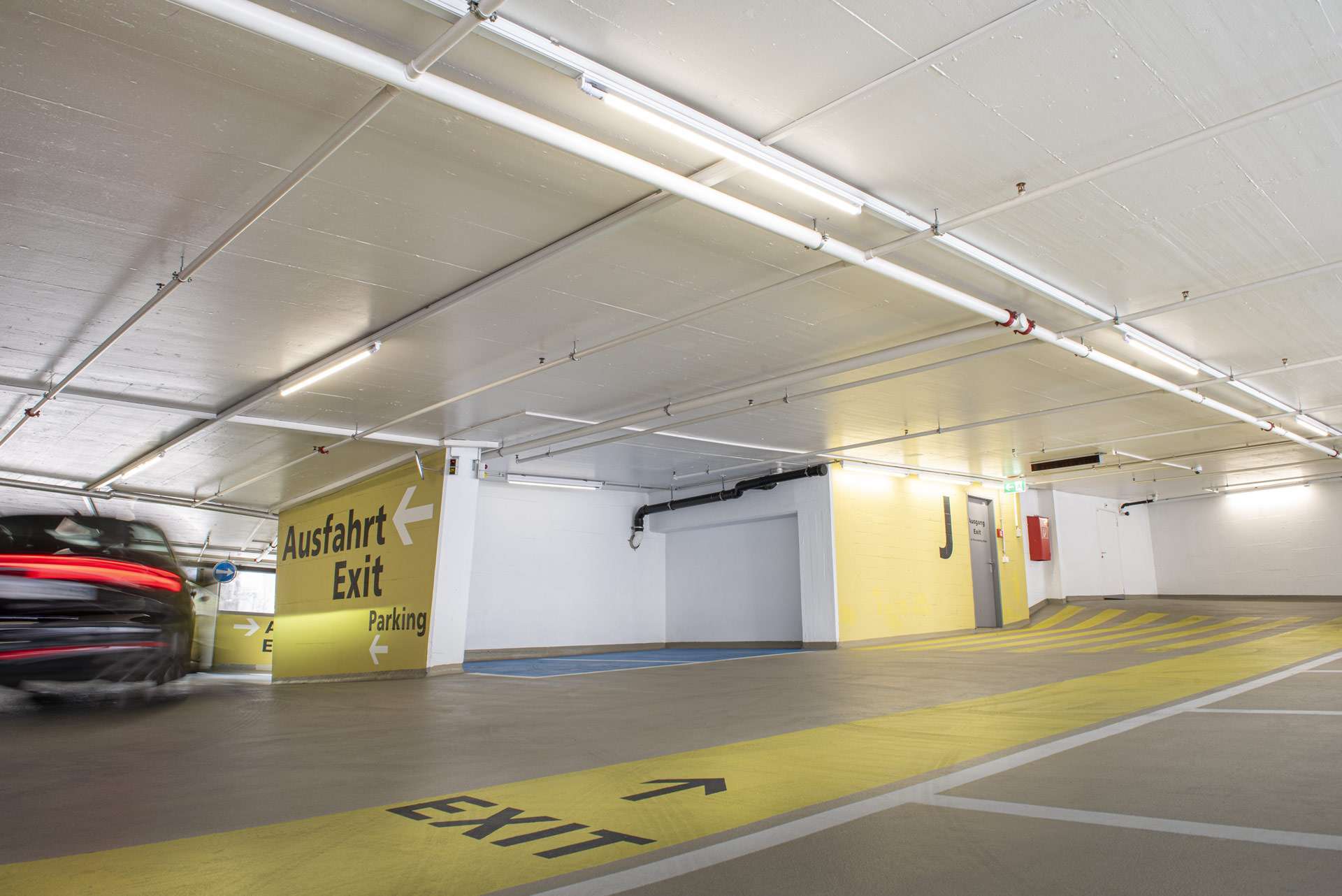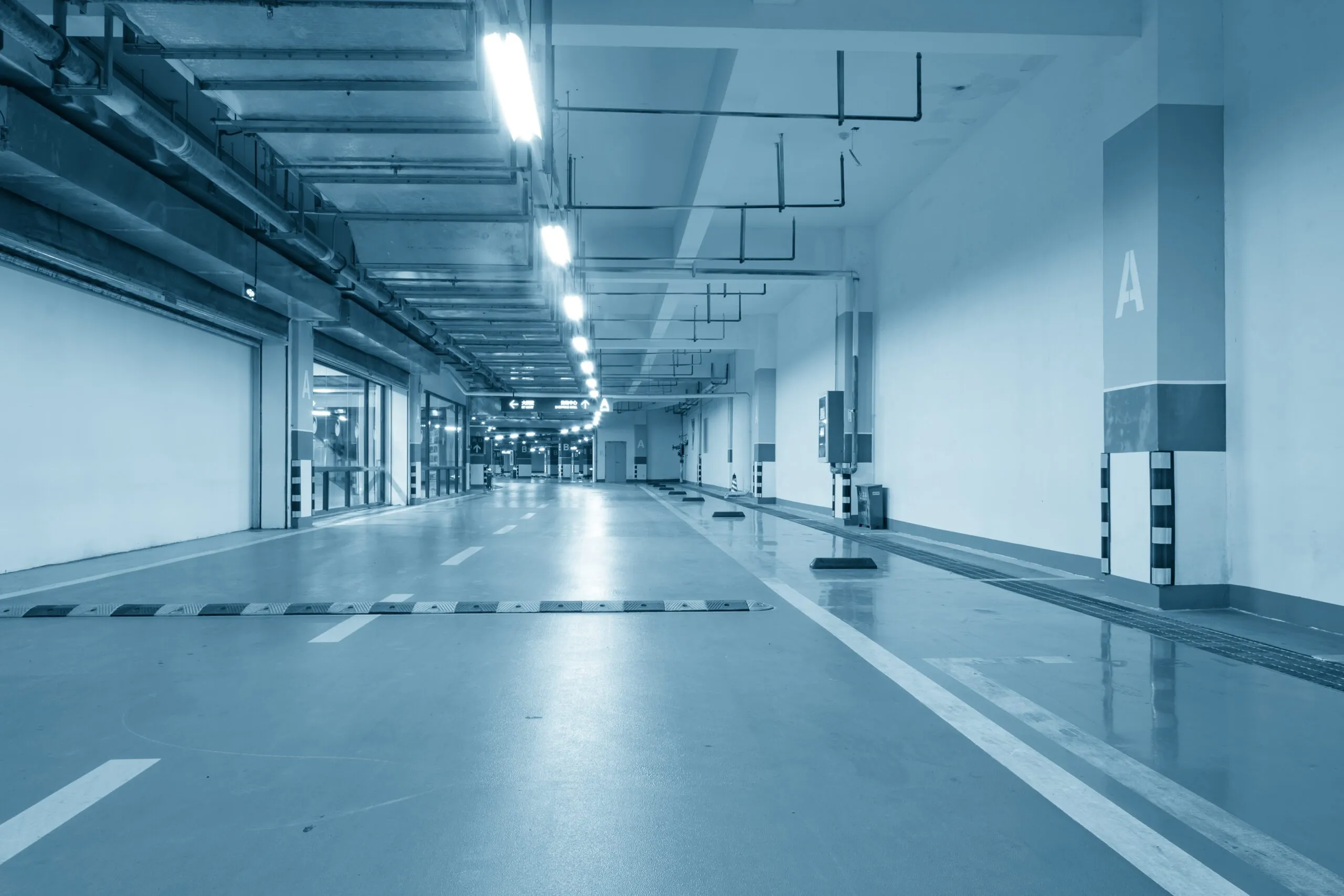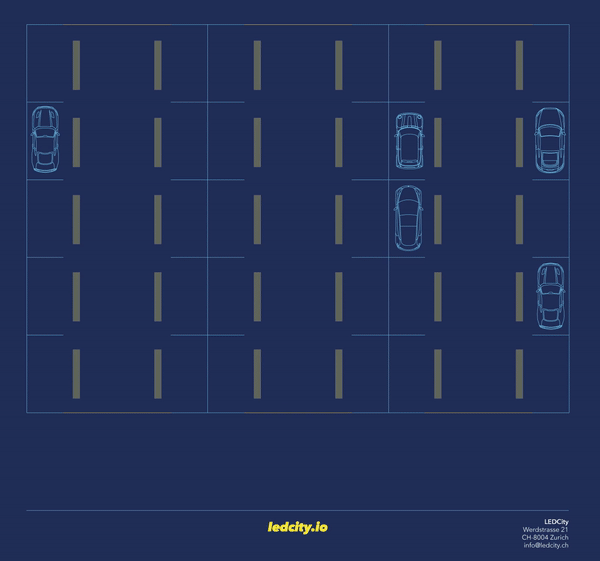
Blog Posts - 10.07.2025

The need to counter rising energy prices and meet ambitious government targets to reduce greenhouse gas emissions is driving companies to implement more energy-efficient solutions. According to the European Commission, buildings are responsible for 40% of energy consumption in Europe. Interestingly, although car parks operate 24/7, they are often neglected in these modernisation efforts. Did you know that around 90% of energy consumption can be saved through a simple renovation?
If you assume that your car park is already “efficiently” or “intelligently” lit, we dare say that there is still a lot of untapped potential. Because the reality is that the lights are often on when they are not needed. Without giving too much away: Most modern LED lighting systems with motion detectors are neither particularly environmentally friendly nor cost-efficient. In this blog, we show you six ways in which you can optimise your car park lighting to achieve maximum energy savings in the long term:
Fluorescent tubes (FL) are still used in many car parks, although light-emitting diodes (LEDs) are undoubtedly the most environmentally friendly lighting technology and therefore the optimal choice for light sources. In fact, LED lights can save up to 60 % of energy and are also easier to recycle. For this reason, FL lamps will be banned throughout Europe from August 2023.
As you may already know, it is generally recognised that LED is the way to go. However, it is very important to realise that LED lighting systems can vary greatly in terms of environmental friendliness and efficiency. When other factors such as sensors and daylight configuration are taken into account, up to 70% more energy can be saved, making such an intelligent LED lighting system the ideal choice for car parks.
How is it possible that the factors just mentioned can save so much more energy? Choosing an LED with a high efficiency class, which measures the light output per watt, is an important factor in maximising energy efficiency. Unfortunately, there are limits to further developments in LED efficiency. However, energy consumption is not only determined by the number of watts, but also by time. This can be explained quite simply: If you look at the formula that defines energy consumption, you realise that it is made up of a multiplication of the electrical power and a time term: E = P*t. Since, as already mentioned, the electrical power can no longer be significantly reduced, the operating time (t) therefore offers enormous potential for cost savings.

Nowadays it is very popular to control the light with motion detectors. Timers and motion detectors are used to minimise the time that lighting systems are in operation. However, this technology is already half a century old and only controls the light very slowly. As a result, entire floors often light up when a sensor detects movement and the light then remains switched on for up to 15 minutes after the person has left the room.
A better solution would be a lighting system that follows people around and switches off again quickly when they leave the area. By integrating sensors into each individual light source instead of connecting entire groups to a central motion detector, targeted and efficient lighting systems become a reality.


The latest innovations in car park lighting have brought us closer to an optimal solution. However, if the lighting is only localised, visitors may not feel safe. Another concern that often arises is whether the light can follow a fast-moving car quickly enough. The solution to dark corners and accidents is networked systems. With this technology, light sources are usually grouped together and when one of the sensors detects movement, the entire group switches on. However, this is a similar system to motion detectors and does not promise as many savings as the newer innovation: true swarm intelligence.
Imagine the following: You enter a car park and when you open the door, the lights around you are already switched on. Your movement has already been communicated by the lights through the door, which is why they are already dimmed up when the person enters the area. In this way, car park visitors can see everything they need around them and still save a lot of energy.
This so-called swarm technology works as follows: Every movement detected by a light source is forwarded to the network. In this way, the network and therefore each individual light source knows exactly where you are. The light around the person is very bright and the further away the light sources are, the lower the brightness level. Within a short radius of 5 metres, for example, the light is set to a brightness of 90% and within a radius of 15 metres the light is dimmed to 20%. Of course, these settings can be adjusted to suit individual requirements.
The light follows you like a swarm and ensures a smooth experience while saving a lot of energy.
This video shows how the unused parts of the car park are dimmed down, but are still bright enough for visitors to feel safe.
True swarm intelligence can be found in systems like NOMUS and is a promising solution to address safety concerns while reducing energy waste in car parks.
Let’s summarise how lighting can save energy: Efficient LEDs combined with smart technology to minimise operating time is the way to go. But there are even more possibilities:
The strong trend of using data for optimisation has also shaped the lighting industry. When a sensor-controlled system is installed, it provides comprehensive sensor data. This can be easily evaluated on a dashboard and used to check and optimise energy savings and for operational automation. This is because the light can be configured and adjusted based on the data, and the parameters can be refined according to individual preferences in order to save more energy. In addition, the latest lighting systems are able to generate energy reports that show fluctuations in occupancy throughout the year and form the basis for recognising further potential savings. For example, which floors of the car park are used the most and therefore need to be heated more.
The efficiency of the lighting system is important, but the environment also has an impact on the amount of energy consumed. Lighting calculations are usually used to determine the number of light sources required to achieve the desired lux level. If the walls and floors of a car park are painted in light colours, less artificial light is needed to achieve the same brightness as with darker colours. Allowing daylight to enter the car park is another way of reducing the need for artificial lighting. In practice, however, most lighting systems do not adjust the light level when daylight is present. It is therefore advisable to choose a lighting solution that can adjust the artificial light to the desired brightness. This can help to save energy while maintaining the desired lighting level in the car park.
Intelligently lit car parks should not only consume less energy, but also be environmentally and user-friendly. The circular economy is a model that encourages businesses and individuals to reduce waste and pollution by recycling products and materials. With most modern LED lighting systems, it is common practice to replace not only the old light sources but also the existing fixtures with complete lamps, which results in significant waste. It is recommended to retrofit the existing luminaires instead of replacing them. This saves a lot of grey energy, which is consumed during the renovation of car parks. In a so-called retrofit, the ballast for the fluorescent tubes is rewired so that the socket can be retained and fitted with standard-sized LED light sources such as this LED tube.
This is not only the more environmentally sustainable solution, but also leads to cost savings. Converting existing luminaires to LED light sources eliminates the cost of replacing entire luminaires. It also saves time in the event of a fault, as replacing a light source is quick and easy as there is no need to dismantle an entire luminaire and fit a new one.

Although technological advances have improved the efficiency of lighting systems, the complicated cabling of various sensors, light sources and devices, as well as the costly programming effort, are often an obstacle for companies to opt for intelligent solutions. It is therefore important to choose a lighting system where the intelligence is integrated into the light sources themselves rather than in separate devices, making it not only easy but also energy efficient to install, maintain and replace.
Want to find out more about us?
Get in touch with us!
If you have any questions, please contact [email protected]